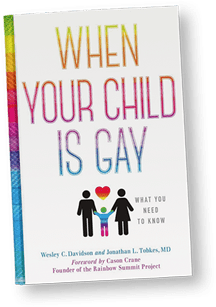This post was originally published on September 1, 2022
Children should be able to learn in a safe environment but compared to heterosexual students, LGBTQ+ students receive a disproportionate amount of bullying. Perhaps your child has already started school and witnessed bullying or maybe he is dreading going back to school as he fears being bullied in person.
What constitutes bullying? There are three types of bullying:
1. Verbal bullying is saying or writing mean things:
-
- teasing
- name-calling
- inappropriate sexual comments
- taunting
- threatening to cause harm.
2. Social bullying is sometimes referred to as relational bullying involving hurting someone’s reputation or relationship.
-
- leaving someone out on purpose
- telling other children not to be friends with someone
- spreading rumors about someone embarrassing someone in public
3. Physical bullying involves hurting a person’s body or possessions. Physical bullying includes:
-
- hitting, kicking, pinching, spitting
- tripping/pushing
- taking or breaking someone’s things
- making mean or rude hand gesture
It’s important to tell your child how to respond to a bully. Here are some suggestions from wikihow.com:
-
- Walk away to a place where you’re not alone. Don’t let them continue. Return to the classroom or go stand with friends.
- Keep a straight face. Don’t let the bully get under your skin. This is what he wants.
- Don’t get into a physical fight. Stay out of trouble.
- Document any instances of bullying or rumor-spreading: date, what happened, who saw it happen.
- Let your actions speak for you. Model good behavior.
- Have the child confide in a family member or friend for support.
- In school, let a parent, teacher or coach know about the bullying.
If you think your child’s teacher may be the bully, tell someone impartial to the situations. You will find guidance on my blog “Making the School Your Ally,” October 27, 2020.

When Your Child Is Gay: What You Need To Know
For more detailed advice, see book, co-authored with a mother of a gay son and a psychiatrist, Jonathan L. Tobkes, M.D.
Posted in bullying prevention of LGBT youth, Uncategorized